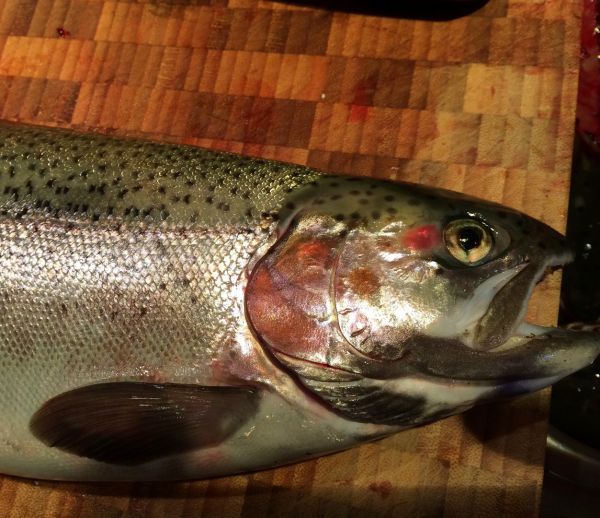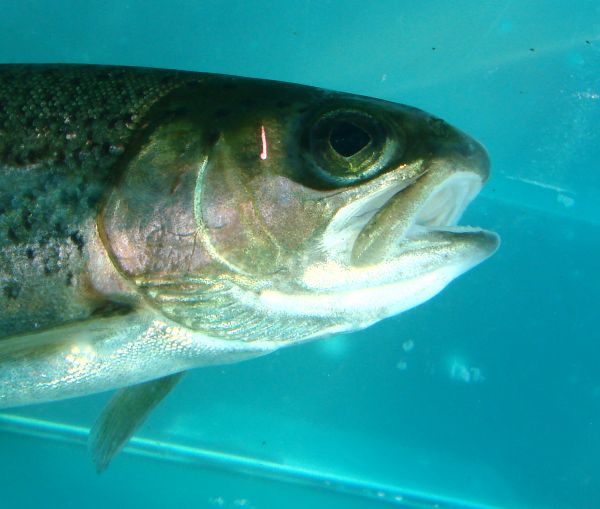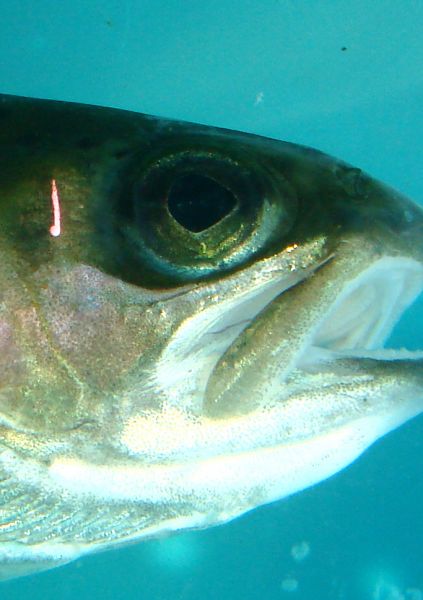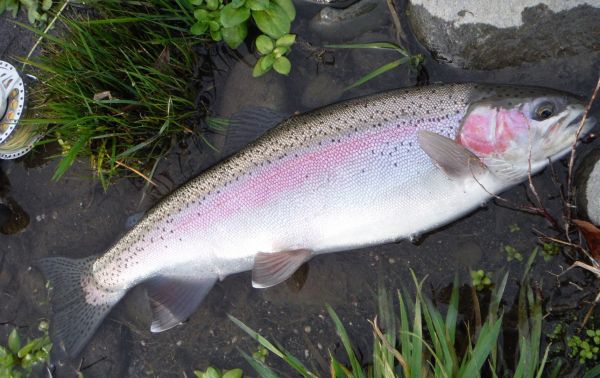| |
|
|
| |
So how do you tell the difference?
Wed 19th August, 2015
|
|
|
|

It seems that every time Myles gets a trout anywhere near his chopping board there's a story to tell. You'll remember the release of young trout from Tarawera that caused so much controversy in 2012 ... well Myles was about to prepare this one for its new home in his smoker when he noticed the pink mark near its eye. He emailed me the pic to ask my opinion. I'd had another from someone else sent to me earlier in the year. Plus I caught one myself a few months back which I thought might be one of those tagged fish. Both of them proved to be false alarms. Too be honest I didn't really know what to look for. OK I knew they were marked with some sort of polymer behind the right eye but that was it. I thought this might change shape over time or bleed into the surrounding tissue. I just wasn't sure.
So how do you tell the difference?
Bottom line ... I didn't know ... so we both contacted DOC. Below are Michel's reply's:

Hi Myles
Thanks for the picture of the trout you caught in the Stag pool. This pink spot is not typical of the Tarawera rainbow trout we released.
In fact there is no such thing as a Tarawera rainbow, Tarawera trout were introduced from Taupo trout. The only difference is that there has been a selective breeding programme in Tarawera where only the progeny of the largest genitors was released in the system. I understand that the idea behind that was to try to have adults returning to spawn 1 year later than usual hence, growing for an extra year in the lake allowing them to grow much larger. The results of this selective programme don’t allow to unequivocally say that this is why Tarawera trout are large. My personal opinion is that Tarawera trout are large because there are not many of them and because the presence of much larger smelt than in Taupo that will boost their growth.
From our genetic work we know that Taupo trout come from a mixture of sources. Some being typical of inland California and other typical of steelhead that run the coastal streams of California. As a result of the different hybridizations between the two types, rainbow in Taupo have acquired a whole range of different physionomic characteristics that become more pronounced with the onset of spawning especially the red colour. We see that on a daily basis at the Waipa trap where we catch rainbow and brown on their way to spawn.
We tagged 3 years ago 5000 juvenile trout from Tarawera that were released in Lake Taupo and in the Tongariro River because we wanted to test if Rotorua trout grow faster and bigger than Taupo trout. Unfortunately we got only one tagged fish returned … Some of these fish had a very thin elastomer mark behind their right eye but it looks very different from what you sent me. I have attached a picture.
Thanks again for your picture and kind regards
Michel
*****************************************************************************************************************
We're all familiar with the picture of the tagged trout {above} that was circulated after they first released them. But after reading the email I wondered if over time this tag mark would change and what was the best way to positively differentiate between one of these tagged fish and a "normal" Tongariro rainbow. This is Michel's reply :

Hi Mike
Thanks for that. I have attached a picture of a freshly tagged trout.
Because of the nature of the elastomer the tag shape will not change over time e.g. wouldn’t bleed. The easiest way to check is to use a UV light as the elastomer has a fluorescent pigment in it.
The other, maybe more obvious clue, is to look for damage to the fins. The tagged fish were hatchery fish so most if not all of them had badly damaged fins typical of crowding conditions in a hatchery and they are the only hatchery fish in the Taupo system.
I suggest you assess the health of the fins first and then look carefully behind the right eye for green or pink marks.
Thanks again and don’t hesitate to contact me if you catch one that you suspect is tagged.

Regards
Michel |
|
|
| Back to Top |
|
|
|
|
|
|
|